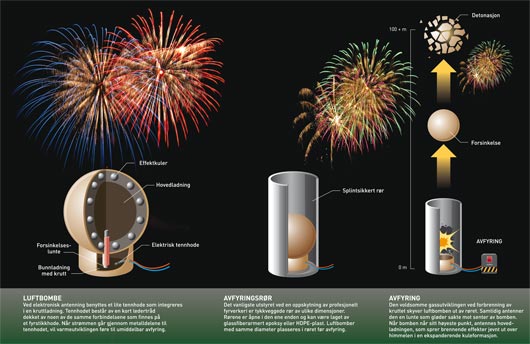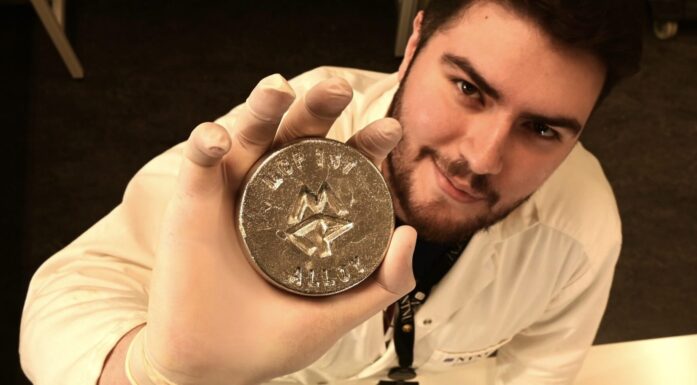Explosive chemistry in the night sky
How can you cram trickling sprays of gold and a rotating flaming wheel into a little tiny tube – and much later, set it loose to explode in the sky?
Around about a thousand years ago, the Chinese knew how to mix saltpetre, sulphur and charcoal to create a big bang. Black powder was first put to religious use in the East, but was later also used by the military – primarily in Europe.
The same basic principles apply today as they did a thousand years ago. But in modern times, chemistry and manufacturing have advanced the technology, enabling the addition of metals, inorganic salts, binders and pyrotechnical chemicals called chlorine donors.
The colours from fireworks come from burning salts. Normal sodium chloride will give a yellowish-orange colour, while barium, strontium and copper salts turn fireworks green, red and blue.
The colours are often accompanied by a big bang. The combustion of packed powder leads to the very rapid development of combustion gases. If the fireworks are designed so that it is difficult for hot gases to escape, the pressure inside the casing increases. As the gases build up sufficient force to break out of their casing, a tremendous change in pressure is created, and a huge amount of energy is released in the form of a teeth-rattling boom.
Other types of fireworks are designed to direct combustion gases in certain directions. This kind of design is used in rockets, where gases blow out of a nozzle and drive the rocket into the air. The use of energy-rich additives results in rapid and violent reactions that spray colours up into the sky. Less energy-rich substances create the appearance of colours that stream and flow down the night time sky.
Professional pyrotechnicians currently use air bombs and fireworks batteries in preference to traditional rockets. These are fired electronically from a safe distance, with precision and in a way that is safe for both people and the surroundings. The firing sequences can also be programmed in advance enabling colours and the sounds of explosions to harmonize with the components of complex pieces of music.
Lars Kristian R. Schjønhaug and Steffen Bugge





